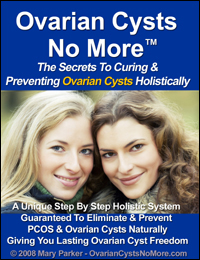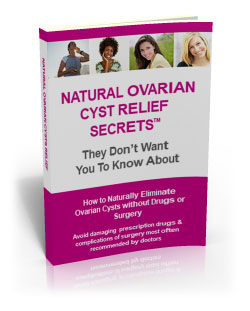Clickbank Affiliate Marketing
|
by Rebecca Wincup
There is no discrimination when it comes to the development of dermoid cysts. Indeed, race, gender, and age have no effect on whether a dermoid cysts will grow. When the cysts develop on the face, scalp or on the neck, they are generally quite prominent at birth. They can also occur in the ovary and this is obviously specific to women.
Totipotential germ cells (cells that can develop into different types of tissues - sking, hair,bone, etc.) can develop into a complex ovarian cyst known as a dermoid cyst. These cysts can contain solid tissue such as hair, teeth, or in some cases bone. They can occur at anytime in a women's life, but are more common during the childbirth years (ages of 20 to 40).
When dermoid cysts cut off the circulation to ovaries, they can cause intense pain that may require surgical removal. These cysts can also develop on a person's face, neck, or scalp.
A dermoid cyst in an ovary is usually a mature teratoma (type of tumor) that is benign. Dermoids are fairly common in women over the age of 40 years. Dermoid cysts are rarely cancerous - they make up about one half of all benign ovarian tumors. But about 1 to 2 percent of dermoid cysts are cancerous.
Cancerous dermoid cysts are referred to as immature teratomas. The development that occurs early on will determine if or not a dermoid cyst may become cancerous. Dermoid cysts are rarely ever cancerous, and can vary in its content, often known to contain hair, sweat glands, cartilage, and muscle fibers. There is slim to no chance that a dermoid cyst will turn into a cancerous cyst once there are hairs or other similar features that appear on it.
A typical dermoid cyst is often asymptomatic (neither causing nor exhibiting symptoms of disease), but can normally be found during a routine pelvic exam. They are seen as growths on an ovary, sometimes twisting themselves or rupturing, both which can cause severe pain in the abdominal or pelvic area. When dermoid cysts are found in the ovaries, it is often best to have them surgically removed to avoid future complications.
The irritation of the abdominal cavity, called peritonitis, is very painful and likely if the dermoid cyst keeps growing.
Any ovarian cyst can twist or burst, causing abdominal pain or pain in the pelvic area. While most of the time you will not feel a dermoid cyst, when you do, abdominal pain is the most common symptom. Other types of ovarian cyst can also cause this stomach pain, and can only be identified as an ovarian dermoid cyst by a doctor.
The symptoms of ovarian cysts are something every woman should be aware of, and any time she experiences these symptoms, she should consult a doctor. Any ovarian cyst that has the potential to turn complex should be watched carefully, and this includes a dermoid cyst. Removing a dermoid cyst has no impact on fertility and should not cause pregnancy complications. Still, patients need to perform good self care post-surgery to keep scar tissue form forming.
About the Author: Find out what are symptoms of ovarian cysts. Investigate an effective ovarian cyst treatment using a holistic 3 step system.
News About Ovarian Dermoid Cysts



